Atlanta-produced music video about the trial and death of George Stinney
The ECG Productions office is always dark. From an outsider’s perspective, you might think they were never open. Having been with ECG for a little over 4 months now, I can assure you that this is not the case. In fact, you would be hard-pressed to find the offices empty. Just like a beehive filled with workers, the ECG Productions office and studio are constantly buzzing.
I knocked on Jay’s door and was quickly met with a, “come in!” Just like the rest of the ECG Productions space, I have never seen the overhead lights on in Jay’s office. It must be a video thing, because come to think of it, I have never seen the overhead lights on in any ECG office. This is not to say that there is not plenty of light. All three of Jay’s monitors were glowing; the latest cut of our music video for The Armory on one, an in-progress script on another, and an email inbox that would send shivers down your spine on the third.
Despite the obvious workload, Jay was happy to spare 30 minutes with me to talk about ‘George Stinney,’ our latest music video project for which he was the director. I dive right in:
Lauren: So Jay, let’s start with you telling me how this project came to be. How did you meet Bryant Robbins (P-Dash)? What was the collaboration process?
Jay: P-Dash was a fan of a couple of our other videos; he thought they were good, and wanted to take his own music videos in a new direction. He didn’t want to do something that everybody else was doing. He wrote me an email and we emailed back and forth a bit. He sent me the record; the whole thing. He allowed me to pick what song I wanted to do off the record – which I had never had the opportunity to do before – which I thought was really cool. I listened to it a ton of times, on a loop.
I couldn’t get ‘George Stinney’ out of my mind.”
I couldn’t get “George Stinney” out of my mind. In the beginning of the song, he tells you to go get an iPad, an iPhone – look this guy up. After the song, I really wanted to learn about this case. I’d heard it from P-Dash, but he can be a little hard to understand when he’s rapping so fast. I went back and read about it and thought, “Oh man, we have to do this.”
I told Bryant that’s what I wanted to do and I wrote the script. I didn’t talk to anybody about this one prior to anything. I just presented it to Trey, an animator and director of photography for ECG, and he really liked it. The idea stemmed from watching ‘Drunk History’ and seeing the kid – I think it was a Thomas Jefferson sketch or something like that – do the lip-syncing. I thought, “Oh that was cool. I don’t think I’ve seen that in a rap video before. That’d be really interesting.”
Lauren: I totally agree – I am a big fan of ‘Drunk History.’
Jay: Yeah, it’s so awesome! It’s the best show ever. So that stirred the idea, then I wrote the script and gave it over to Trey. Trey said, “Yeah, this is awesome,” and we pretty much went with that script. It didn’t really change at all until probably the week of the shoot, which was frustrating. Some people wanted to change the scene order.
At that point I was so into it that I was more reluctant to make changes. After sitting on them for a couple of days, I realized that they were the smart decisions to make. I took their advice and we switched up the order a bit. When three people are telling you the same thing, they’re probably right.
Watch the official George Stinney music video.
Lauren: What were some of those changes?
Jay: They were really about scene order. We had a scene where P-Dash was rapping as the judge. He was flashing in and out. I’d only done that effect there; that would have been the only times he flashed in and out on a person other than George, which wouldn’t have made sense overall. I think I wanted that scene because I just wanted to see P-Dash rapping as the judge. It was the best decision to cut that scene out though, not only for production reasons but for time.
Lauren: What was the most challenging part of getting this project off the ground?
Jay: Locations were the biggest problem until we had a good producer work on it. That’s what it really came down to. We were struggling to get things rolling because there wasn’t enough action. We probably could have done it faster if we took more action. That’s my fault, but we needed to be more aggressive about it. Once we got aggressive with the locations everything started to fall in place.
With things like this there are a lot of challenges, but we have really awesome people. Everybody who works on our staff is awesome; there’s not one person who sucks, so that helps. There’s not one person who’s holding it down. The people who suck, they go right to the bottom and they’re out. They don’t even have a chance. Only the best people are part of the team because it’s really all about the team.
This would have been impossible without this team. Absolutely. Everybody – Jen, you (thanks, Jay!), Brandon, Trey, Jase, David, Dale on set. That’s why P-Dash wants to do another video right away.
“These are the things that you can make art out of.”
Lauren: This particular project could be viewed as controversial; it’s delicate subject matter. Do these types of projects make you apprehensive or wary of negative backlash, or are you more excited about the statement that you can make with a project like this?
Jay: I want people to be upset by it, or I want them to be interested in the subject matter because of it. I’ve never been scared about putting anything out – anything. We’ve done some crazy stuff, but you’ve got to throw it all out there because you never know what’s going to hit. These are the things that you can make art out of. It’s not a corporate video.
That’s what’s fun about it; the whole goal is to get attention – that’s why you make videos. You don’t’ make videos so nobody sees them, right? So who cares? I would love for somebody to be like, “What he did was extremely hateful,” because at least now they have an opinion about it.
Lauren: What moment stands out in your mind from this shoot?
Jay: The biggest moment that sticks out in my head is the interrogation scene because it was everything that I had in my head, exactly. I had made sacrifices in other places because of the location, but I got everything I wanted in that scene, and more. It’s by far the most powerful scene for me. I really like how the detectives and Dejean played it. Even the shot of the ice cream. I wanted to really emphasize the ice cream because to a kid ice cream is the ultimate.
I had this idea of the ice cream, with the whipped cream going on at 300 frames per second, then the cherry gently dropping on it – that is like the ultimate bribe for a kid. Especially if he hasn’t eaten in a long time and his family has been taken away from him. He was in a state.
Lauren: This might get the same answer, but what was your favorite scene visually?
Jay: Visually, my favorite scenes come from the scenes with P-Dash in the field, as well as the stuff that Chance shot of the girls on their bikes. These are examples of shots that happened organically. Everything we shot in the courthouse was great just because the courthouse was so beautiful. It looked amazing on camera; it was so realistic and so beautiful, cinematic. It added hundreds of thousands of dollars of production value.
“The biggest thing that I’d like people to take away is simply knowing who George is.”
Lauren: Alright, Jay. My last question for you is: what is the #1 message or takeaway that you hope viewers get from this video?
Jay: I think the biggest thing that I’d like people to take away is simply knowing who George is, and knowing that there are a lot of injustices in the world. The ones that we do to kids are the absolute most horrendous. They should takeaway that everybody has some stereotype about race; it’s just how it is, unfortunately. But, when it gets extreme is when it gets dangerous. Nobody should be allowed to hate like that. It shouldn’t slip through the cracks like that. A lot of guilty people go to jail, but there are a lot of bad people who don’t; they never get caught or pay for their sins. You know some, probably.
Lauren: Do I?
Jay: Yeah, don’t you know a murderer?
Lauren Oh, another time and place!
For the sake of time I kept our interview short and sweet. As someone who worked on this project, I can say with certainty that this is something people will want – and need – to see, and I am grateful to have been a part of it.
UPDATE
On December 17, 2014, 70 years after his execution, George Stinney was officially exonerated of all charges by circuit court judge Carmen Mullen.
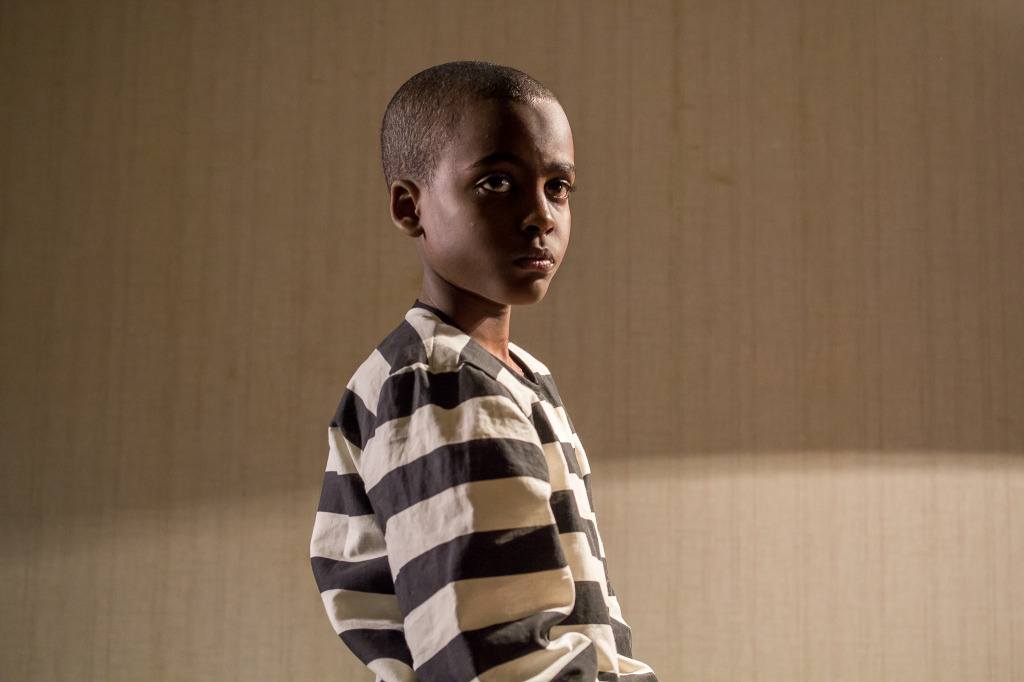
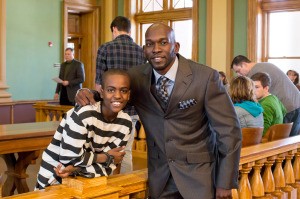
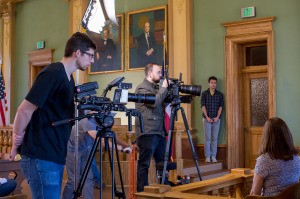
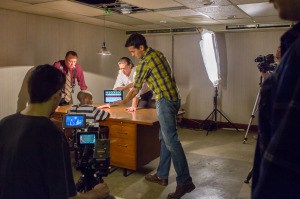
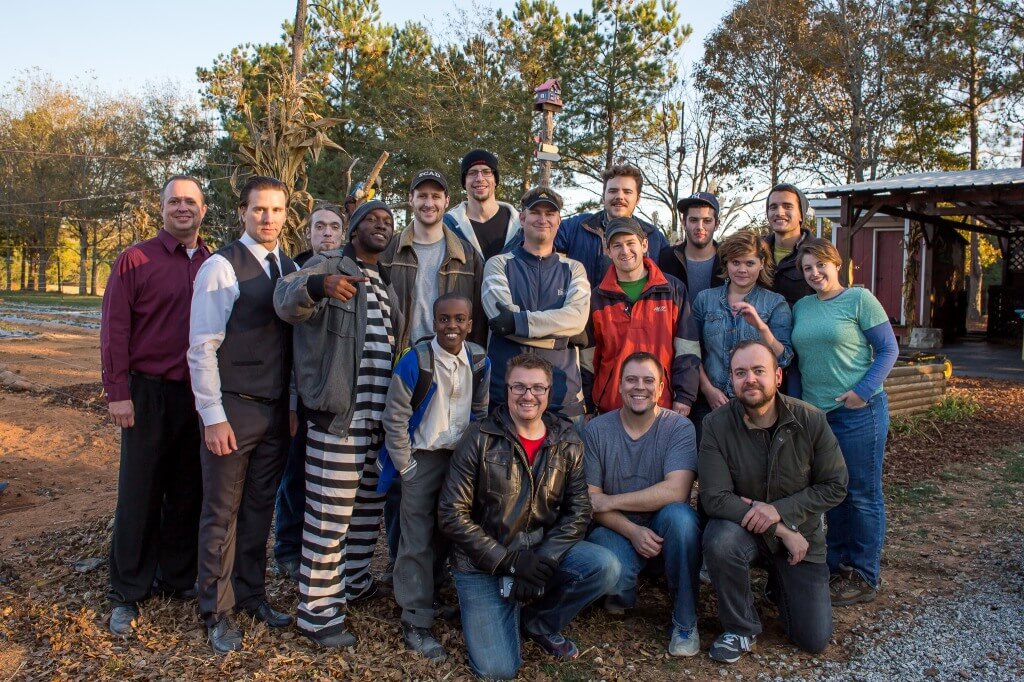

One Response
I was one of the jurors in this video. I had so much fun shooting it. It turned out fabulously.